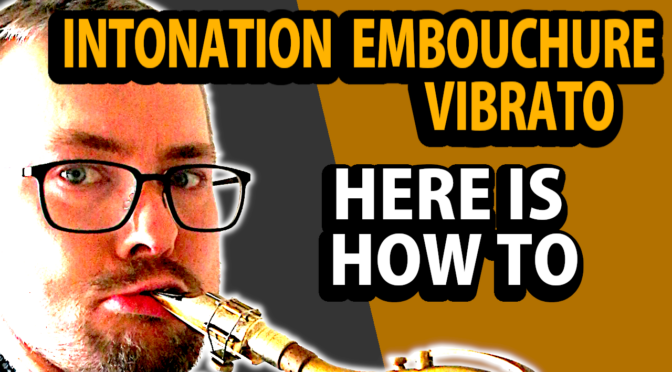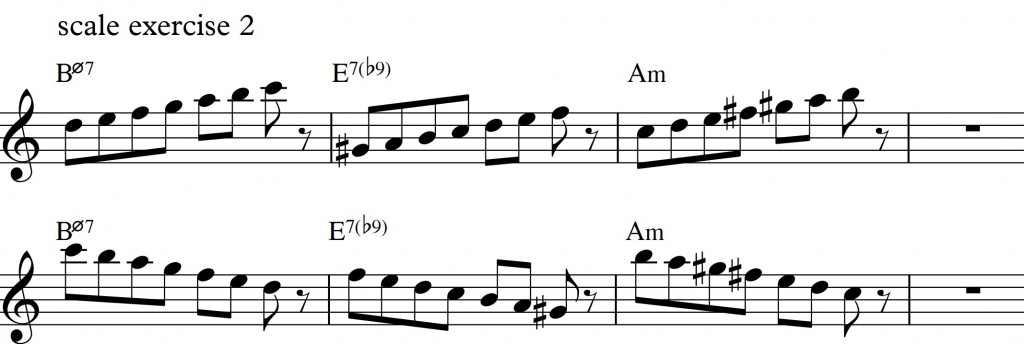INTONATION, EMBOUCHURE AND VIBRATO – HERE IS HOW TO
3 super bonanza embouchure exercises using only your mouthpiece
I think it is difficult, I am always struggling with this, I have trained this a lot and am still doing it.
Tuning and intonation on the saxophone.
But we need impeccable tuning as saxophone players because one of the things most people can actually hear and relate to is bad tuning and bad intonation!
In this video I will take you through how to tune the saxophone and how to train your intonation.
In this tutorial
Why do you need good intonation?
The difference between tuning and intonation
Get great intonation
The greatest embouchure
Exercise – play a straight note
Exercise – lip bend
Exercise – Vibrato
Great sound is a part of great intonation
Get the full transcription of the lesson:
https://www.patreon.com/posts/49152848
Get more value from the Youtube lessons by supporting me:
https://www.patreon.com/sorenballegaardsaxophonelessons
Get the free E-book material on saxophone practice – sign up for my newsletter: https://bit.ly/subscribetomynewslettersorenballegaardsaxophonelessons
Video links:
“The overtone manual – exercises and licks – Get better control”
Patreon
https://www.patreon.com/posts/38835806
Shop
https://sorenballegaard.dk/product/the-overtone-manual-exercises-and-licks-get-better-control/
Practice overtones and get a much richer sound and better tone control
https://youtu.be/7AchOxuiDcE
Sound is everything – get a better sound – exercises and how to’s
https://youtu.be/q9htAAR3SLk
4 of the most effective sound exercises for your daily practise
https://youtu.be/Y5rd49zooJ4
Subscribe for more free saxophone videos and lessons: https://www.youtube.com/c/SørenBallegaard
Lesson tutorials and live online lessons – check my shop:
https://sorenballegaard.dk/shop
Contact me for video exchange lessons or live online lessons
https://sorenballegaard.dk/saxophonelessons/
Facebook: https://www.facebook.com/groups/sorenballegaardsaxophonelessons
Instagram: https://www.instagram.com/sorenballegaard
Website: https://sorenballegaard.dk
Twitter: https://twitter.com/SorenBallegaard
My setup:
Video camera: https://amzn.to/2S7hrUv
Web-cam: https://amzn.to/3cf71cb
Music notation software – https://amzn.to/3gHW1ag
2x computer monitor – https://amzn.to/3gIclIm
Mini keyboard for music notation – https://amzn.to/3sVufcWTenor saxophone: Selmer MKVI 82xxx
Mouthpiece is an old Otto Link Babbit – refaced from opening 6 to opening 8/8,5
Alto – The Martin Alto
Soprano – Yanagisawa Elimona
Tenor reeds – https://amzn.to/2Qrk8zz
Alto reeds –https://amzn.to/2Pwv8Lu
Soprano reeds – https://amzn.to/3vnHfJS
Saxophone strap – https://amzn.to/3sV20Lt
Alto mouthpiece – https://amzn.to/3sZvdF0
Soprano mouthpiece – https://amzn.to/2R6mvI0
Alto Ligature – https://amzn.to/3xvCn7E
Tenor Saxophone Case – https://amzn.to/32SD1xG
Alto Saxophone Case – https://amzn.to/3aIqxgu










































